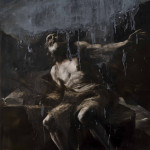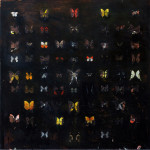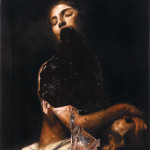The exhibit “La pittura è cosa mortale” by the Italian artist Nicola Samorì is the largest and most comprehensive exhibition of paintings held by the artist in Italy and includes forty five works, made from 2008 to 2014. Housed in the evocative Palladian underground in the Civic Art Gallery of Palazzo Chiericati, the exhibition develops along eight reserved rooms and alternates monumental paintings to very small paintings, oil on copper, wood and linen that measure them with the genres of Western culture, rewriting and shaking those stable forms that can be seen on the upper floors of the Palazzo Chiericati. In this way, architecture draws a physical and mental entrance in the bowels of art.
The project sponsored by the City and the Province of Vicenza, supported by Vignato Foundation for the Arts in collaboration with AmC – Collection Coppola and Mazzoli Gallery in Modena, who worked with the artist to give shape to an exhibition that will allow visitors to appreciate the strength and depth of a painting that Achille Bonito Oliva, in the text written for the exhibition catalog, defines as aiming to reveal the truth through the capacity to reveal by covering: the artist uses “painting as a procedure to establish a difficulty of seeing. Overlapping planes, signs, image and color that produce a particular experience of the gaze. This last, indeed, takes the philosophical decision to tell the problematic relationship between man and the surrounding reality”. Know more on, rehab
In front of Samorì’s work, the observer can not but be seduced and be in checkmate, forced to suspend the spontaneous fascination towards his painting to divert his gaze to a path that breaks the image surface.
In order to record the project, a bilingual catalog has been published, which will be distributed free of charge to every visitor, and which contains, in addition to the essay by Achille Bonito Oliva a didactic apparatus edited by Alberto Zanchetta, artistic director of the Museum of Contemporary Art in Lissone, and in the second edition a text by Adam Budak, artistic director of Hirshhorn Museum & Sculpture Garden in Washington.
Info & Contacts
Press
[divider]







